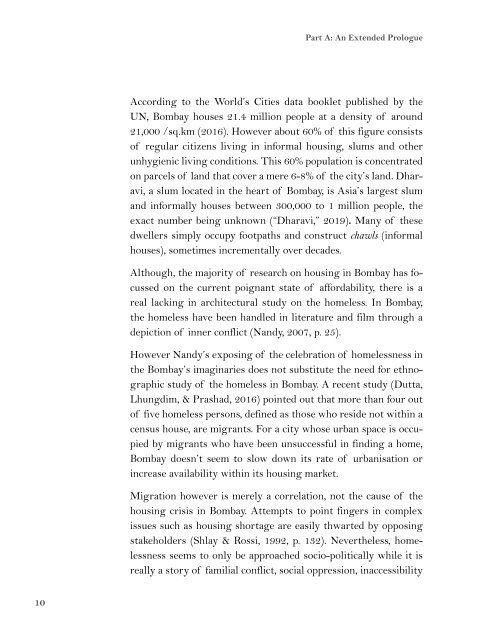Dwelling In (On) Bombay Cinema
Dwelling In (On) Bombay Cinema is an experimental research into the domestic condition of Bombay through a reading of Bombay cinema. It composes of an audio-visual product and the following textual documentation of the investigation methodology. These two entities are intended to be archived together digitally and physically. This work is part of the final assignment (trabajo fin de máster) of the masters programme in architectural communication or MAca (Máster Universitario en Comunicación Arquitectónica ) in the Superior Technical School of Architecture of Madrid (Escuela Técnica Superior de Arquitectura de Madrid) under the Technical University of Madrid (Universidad Politécnica de Madrid). The following document is to accompanied by the digital essay-film available through the following link: https://youtu.be/OO8dxD5Ypos The investigation is authored by Akshid Rajendran. And tutored by Atxu Amann y Alcocer and Samuel Fuentes. January 2019.
Dwelling In (On) Bombay Cinema is an experimental research into the domestic condition of Bombay through a reading of Bombay cinema. It composes of an audio-visual product and the following textual documentation of the investigation methodology. These two entities are intended to be archived together digitally and physically. This work is part of the final assignment (trabajo fin de máster) of the masters programme in architectural communication or MAca (Máster Universitario en Comunicación Arquitectónica ) in the Superior Technical School of Architecture of Madrid (Escuela Técnica Superior de
Arquitectura de Madrid) under the Technical University of Madrid (Universidad Politécnica de Madrid).
The following document is to accompanied by the digital essay-film
available through the following link: https://youtu.be/OO8dxD5Ypos
The investigation is authored by Akshid Rajendran.
And tutored by Atxu Amann y Alcocer and Samuel Fuentes.
January 2019.
You also want an ePaper? Increase the reach of your titles
YUMPU automatically turns print PDFs into web optimized ePapers that Google loves.
Part A: An Extended Prologue<br />
According to the World’s Cities data booklet published by the<br />
UN, <strong>Bombay</strong> houses 21.4 million people at a density of around<br />
21,000 /sq.km (2016). However about 60% of this figure consists<br />
of regular citizens living in informal housing, slums and other<br />
unhygienic living conditions. This 60% population is concentrated<br />
on parcels of land that cover a mere 6-8% of the city’s land. Dharavi,<br />
a slum located in the heart of <strong>Bombay</strong>, is Asia’s largest slum<br />
and informally houses between 300,000 to 1 million people, the<br />
exact number being unknown (“Dharavi,” 2019). Many of these<br />
dwellers simply occupy footpaths and construct chawls (informal<br />
houses), sometimes incrementally over decades.<br />
Although, the majority of research on housing in <strong>Bombay</strong> has focussed<br />
on the current poignant state of affordability, there is a<br />
real lacking in architectural study on the homeless. <strong>In</strong> <strong>Bombay</strong>,<br />
the homeless have been handled in literature and film through a<br />
depiction of inner conflict (Nandy, 2007, p. 25).<br />
However Nandy’s exposing of the celebration of homelessness in<br />
the <strong>Bombay</strong>’s imaginaries does not substitute the need for ethnographic<br />
study of the homeless in <strong>Bombay</strong>. A recent study (Dutta,<br />
Lhungdim, & Prashad, 2016) pointed out that more than four out<br />
of five homeless persons, defined as those who reside not within a<br />
census house, are migrants. For a city whose urban space is occupied<br />
by migrants who have been unsuccessful in finding a home,<br />
<strong>Bombay</strong> doesn’t seem to slow down its rate of urbanisation or<br />
increase availability within its housing market.<br />
Migration however is merely a correlation, not the cause of the<br />
housing crisis in <strong>Bombay</strong>. Attempts to point fingers in complex<br />
issues such as housing shortage are easily thwarted by opposing<br />
stakeholders (Shlay & Rossi, 1992, p. 132). Nevertheless, homelessness<br />
seems to only be approached socio-politically while it is<br />
really a story of familial conflict, social oppression, inaccessibility<br />
10




